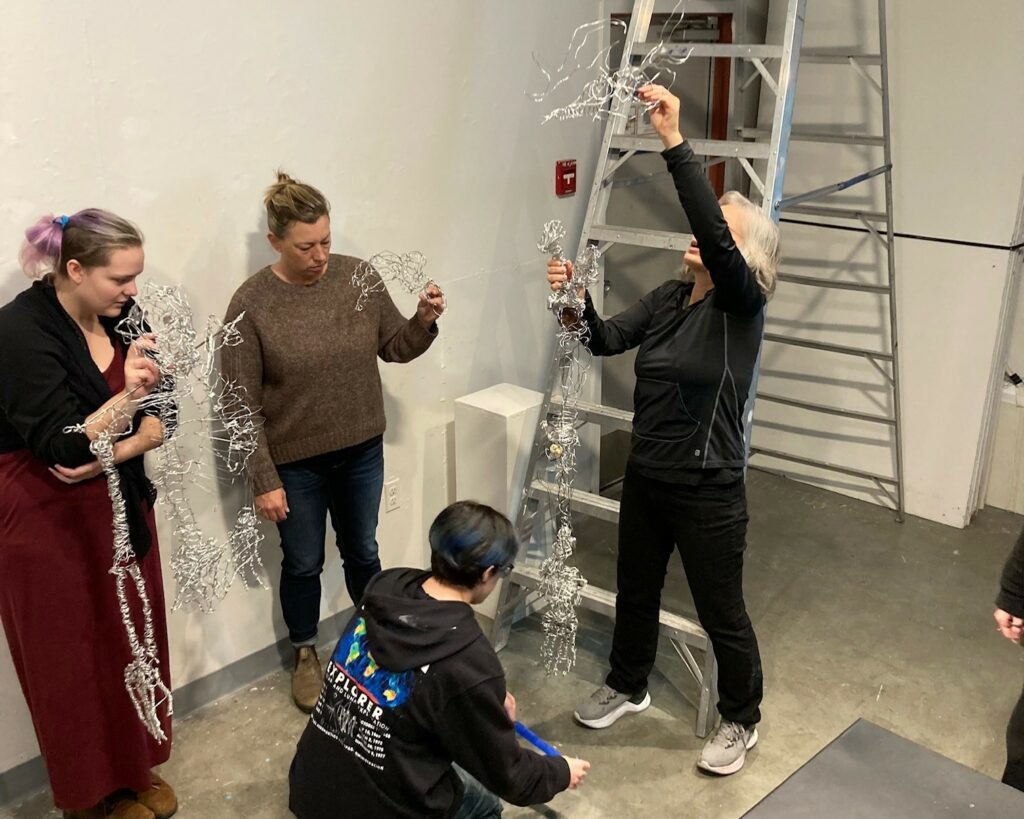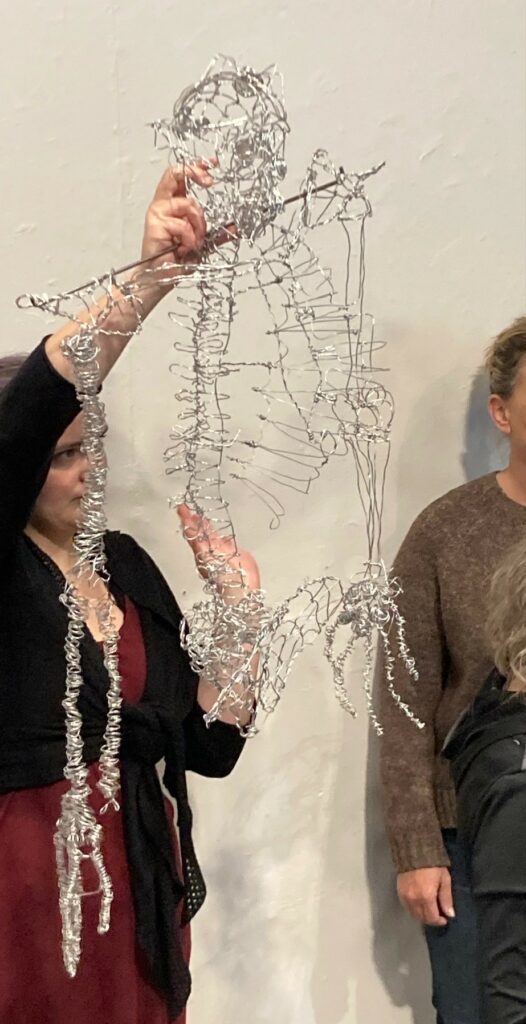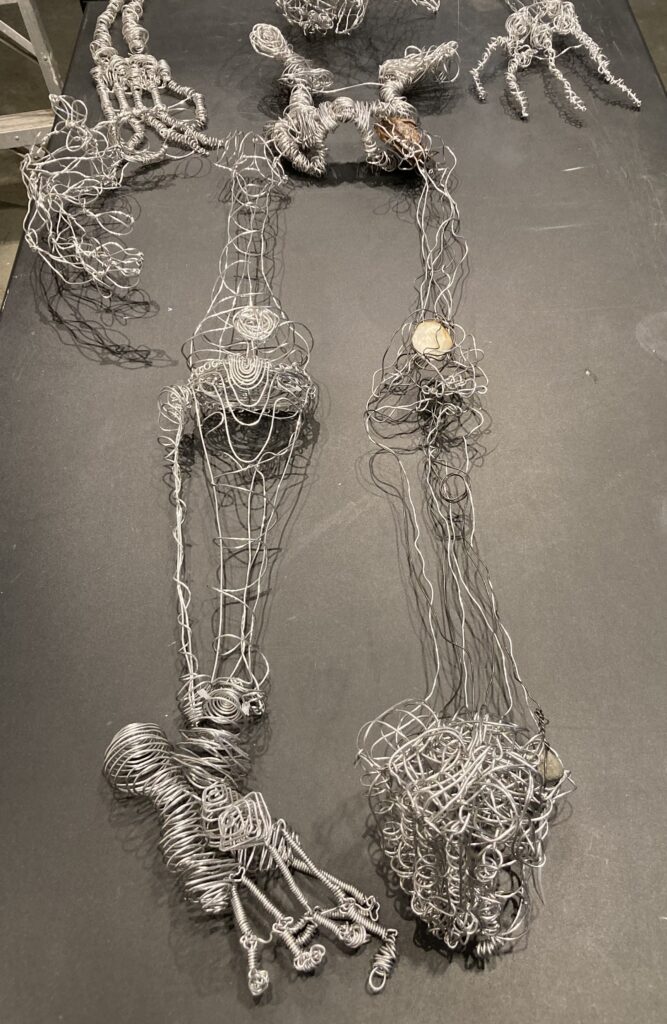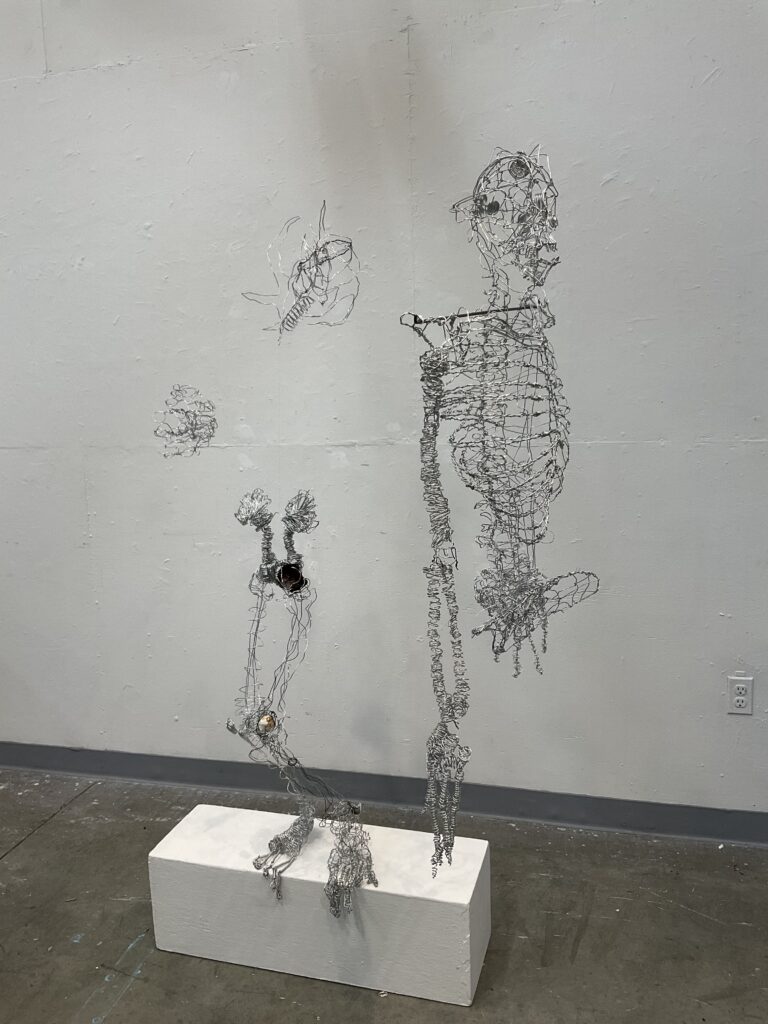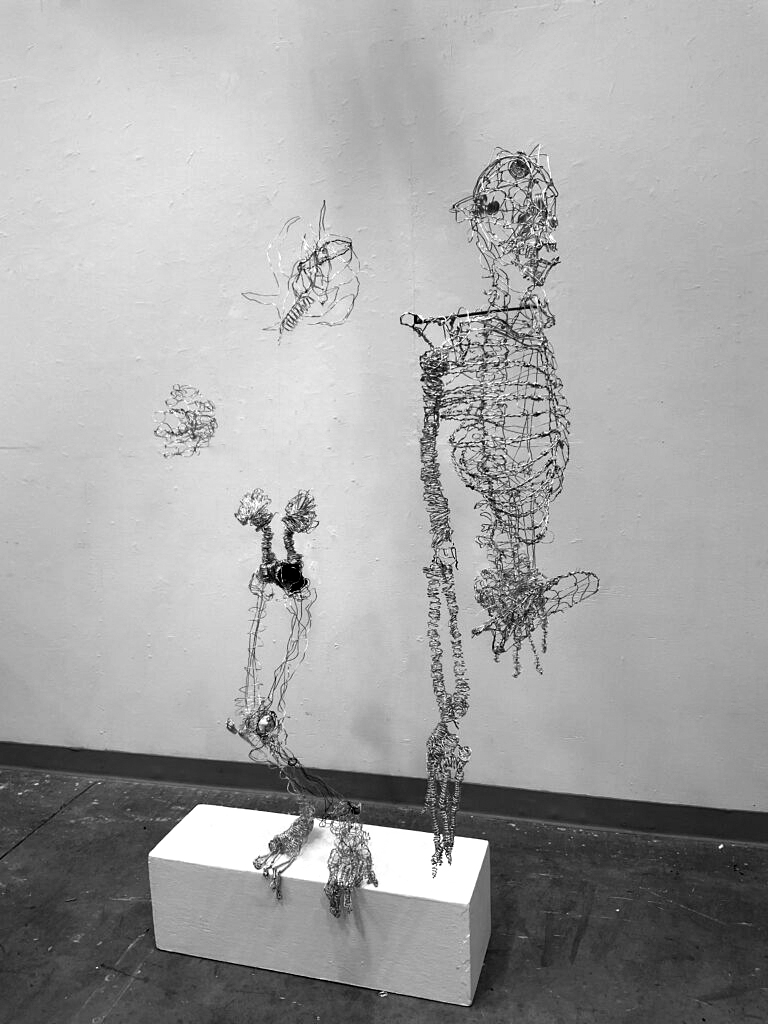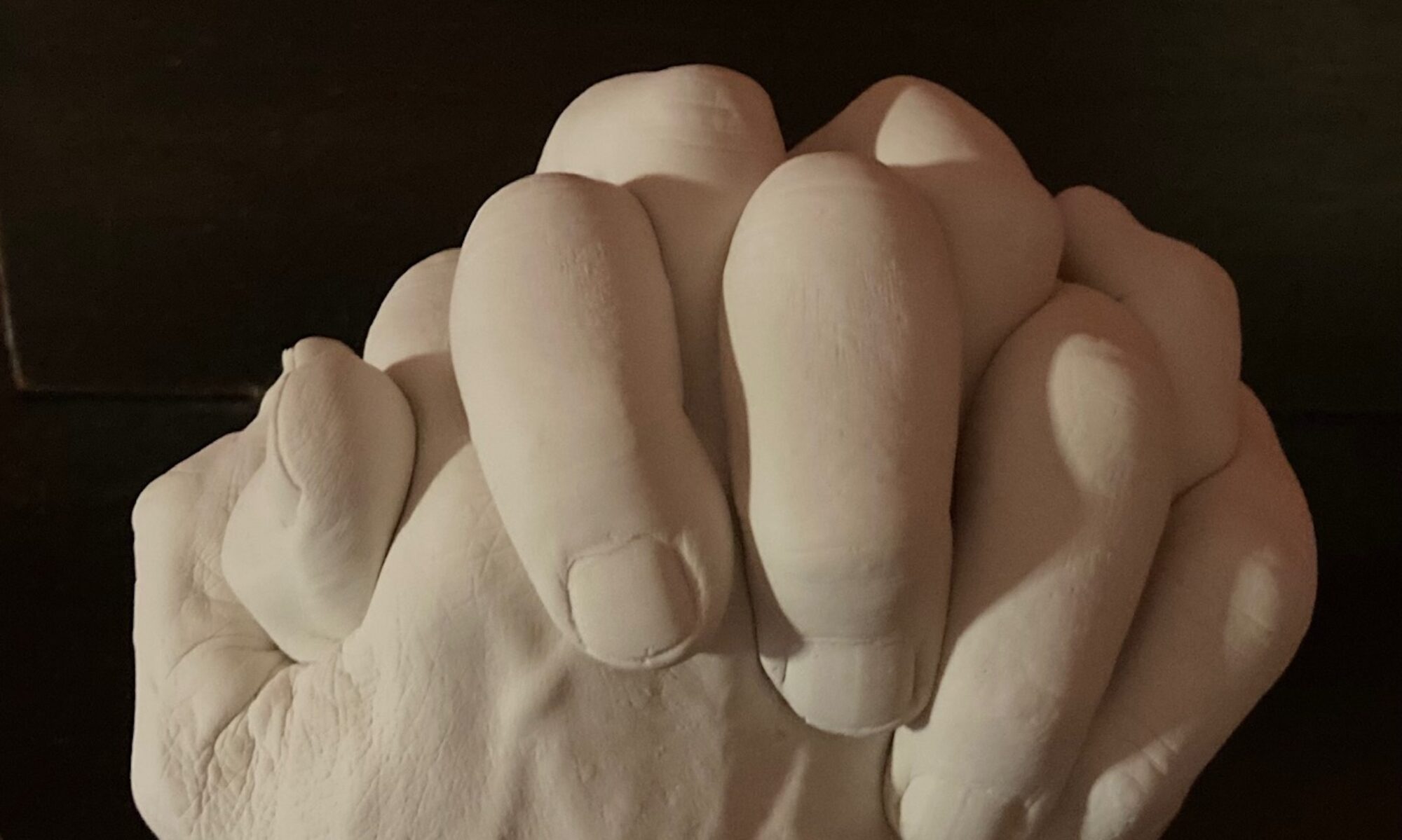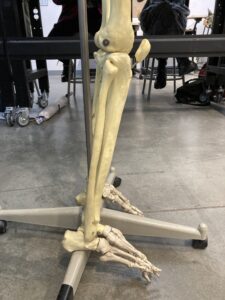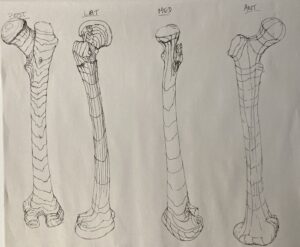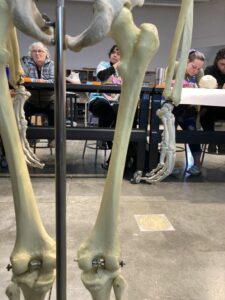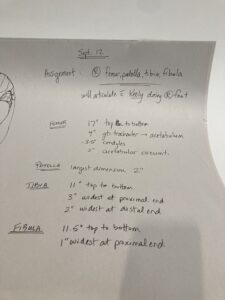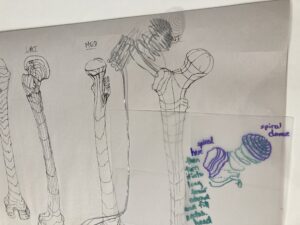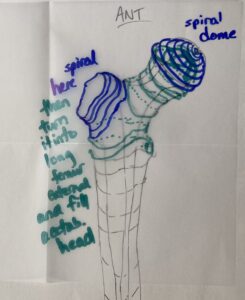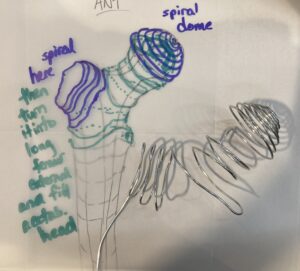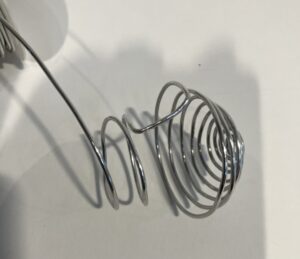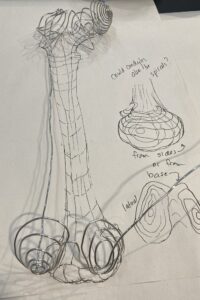UNIT 1 EXERCISE 2: Articulating Composite Forms (Human Skeletal System)
My assignment was Right Leg minus the foot, so I had 4 bones to make — femur, patella, tibia and fibula. Needed to articulate with Jim’s pelvis and with Keely’s right foot. We all decided to work to 100% life size. I took photos of the skeleton and measurements of the bones as seen below, but found there were too many students to use that one source for all the details so I also used online photos and anatomical drawings of all the bones from all angles for reference.
BUILDING the FEMUR:

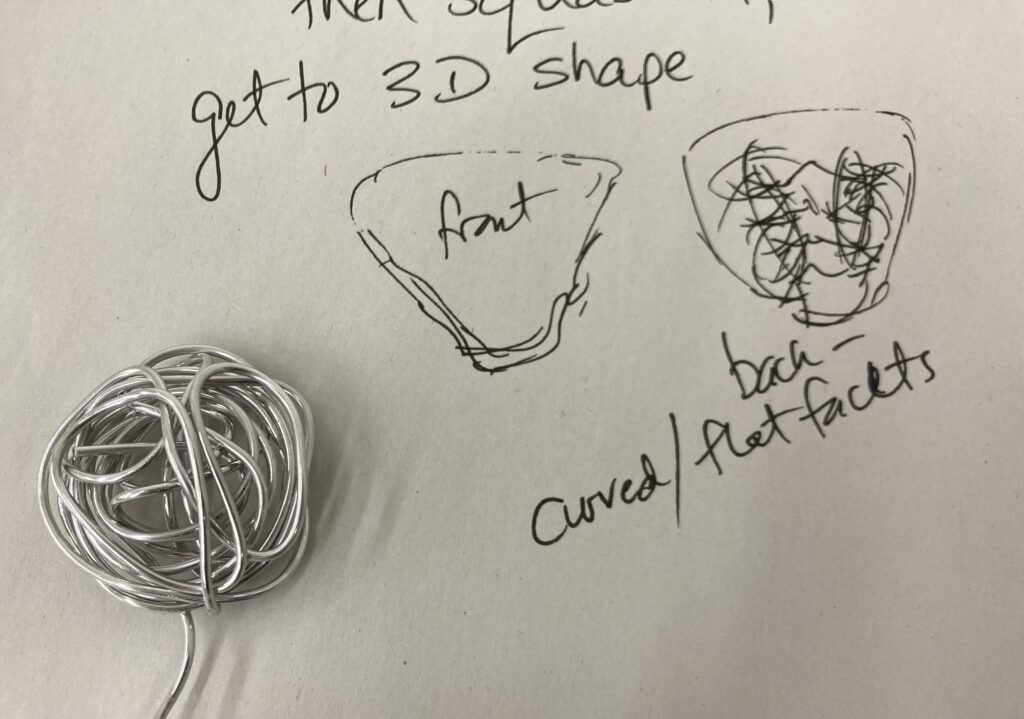
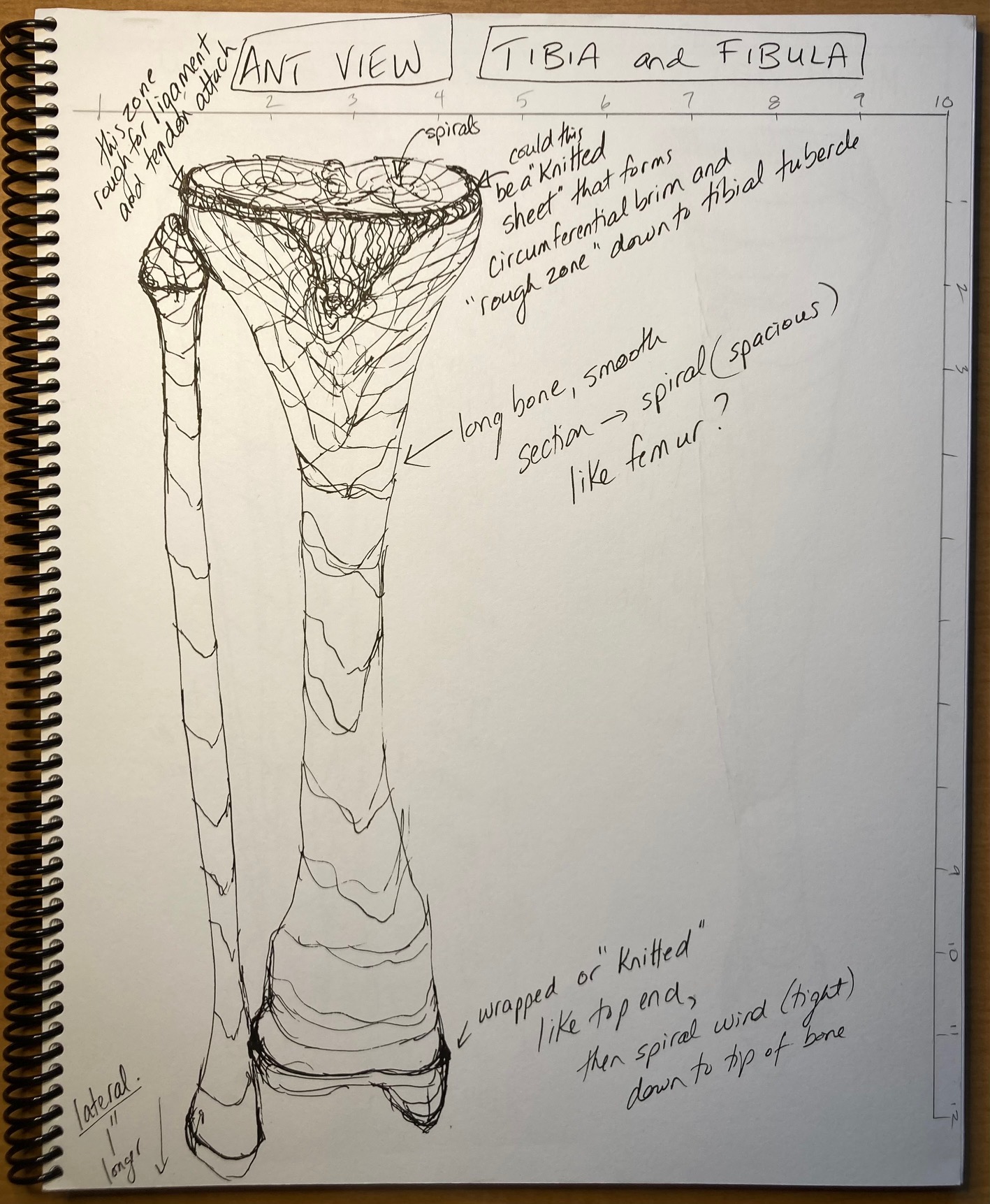
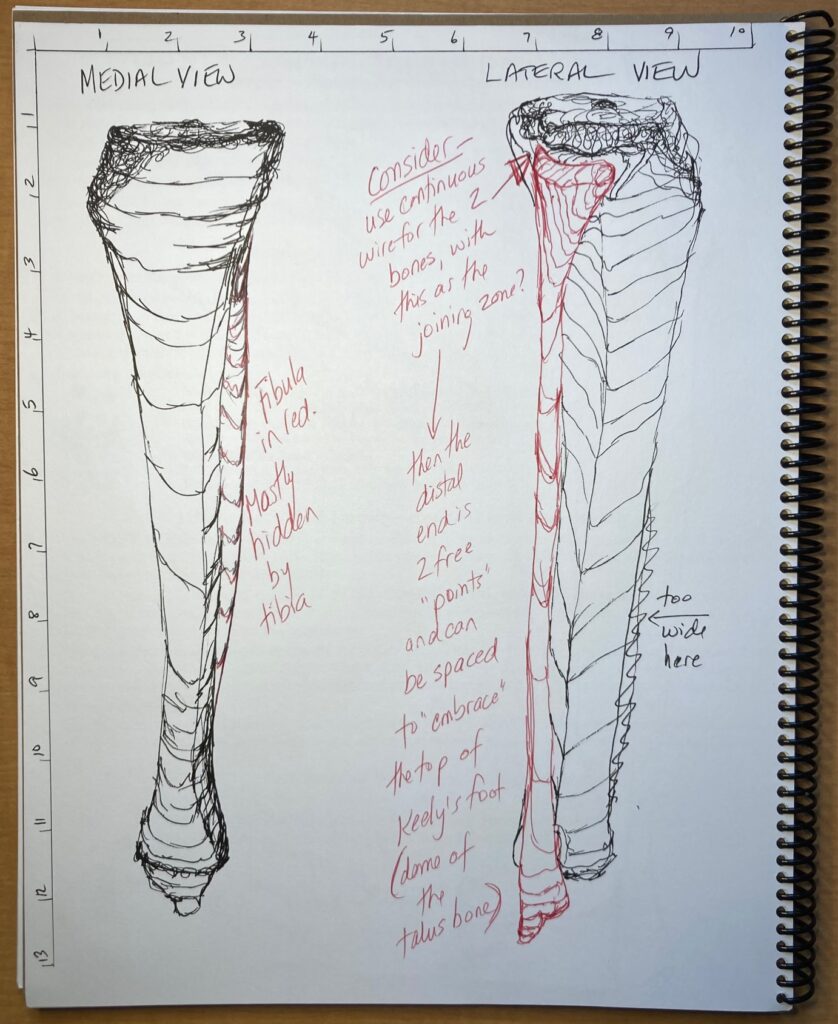

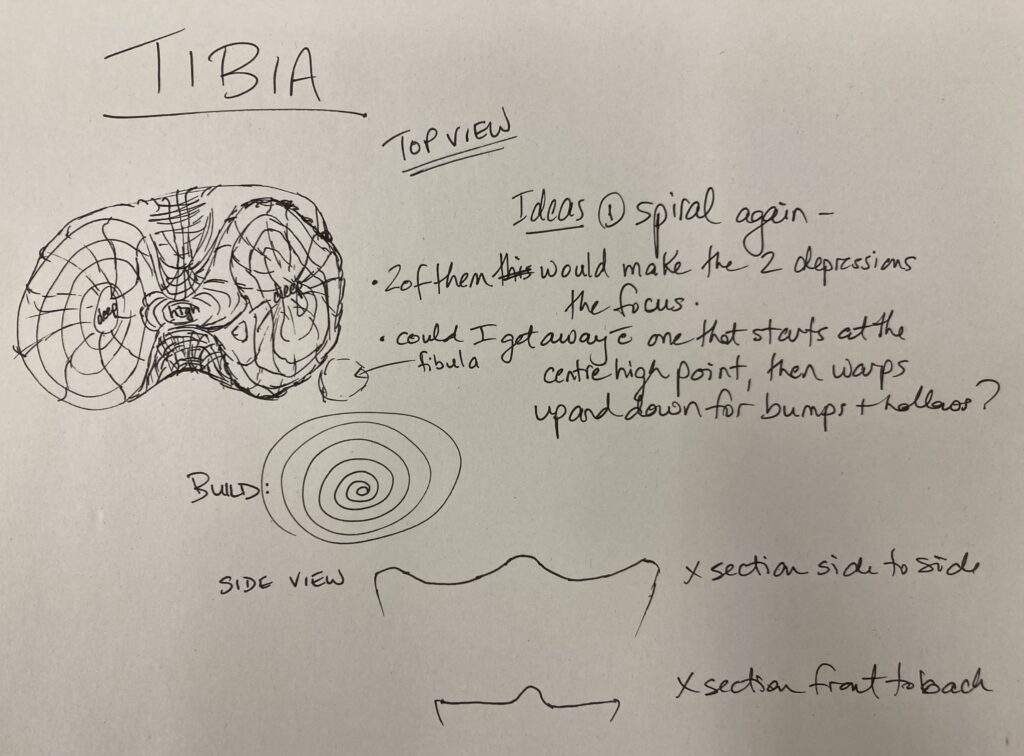
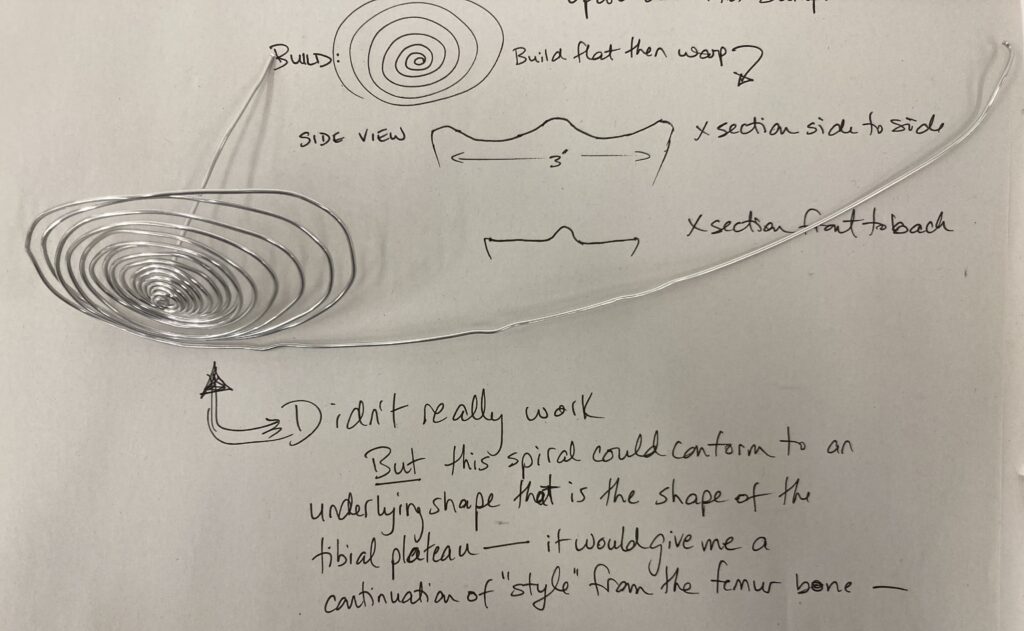

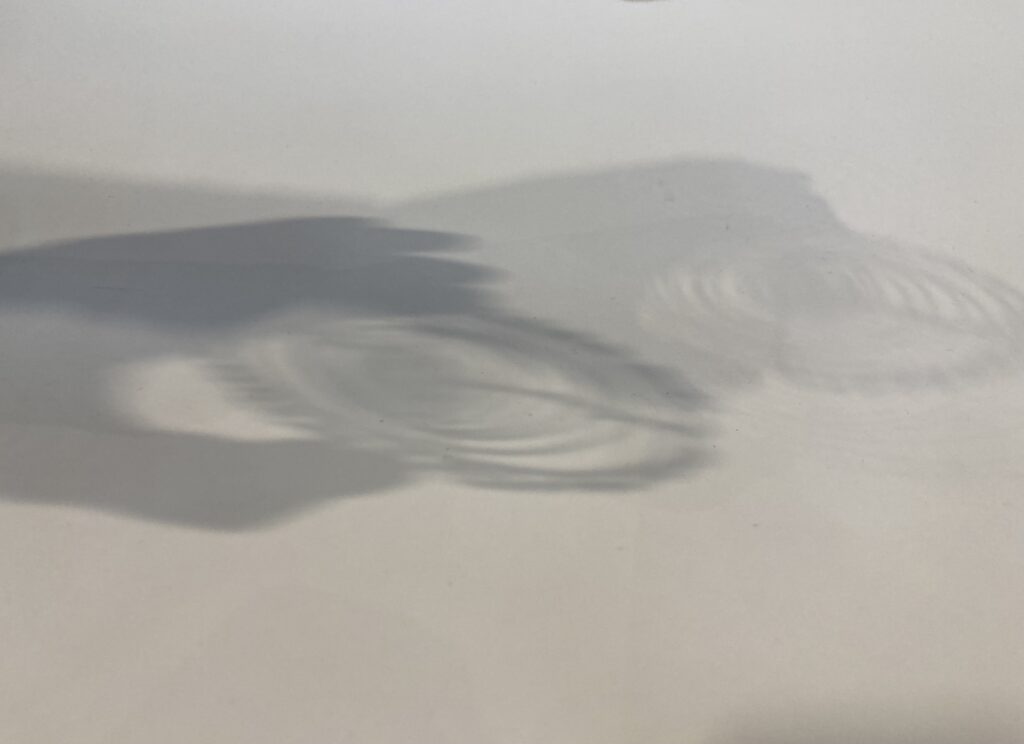
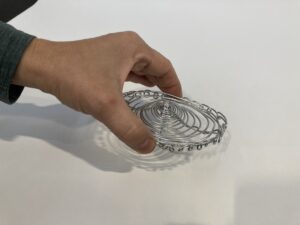
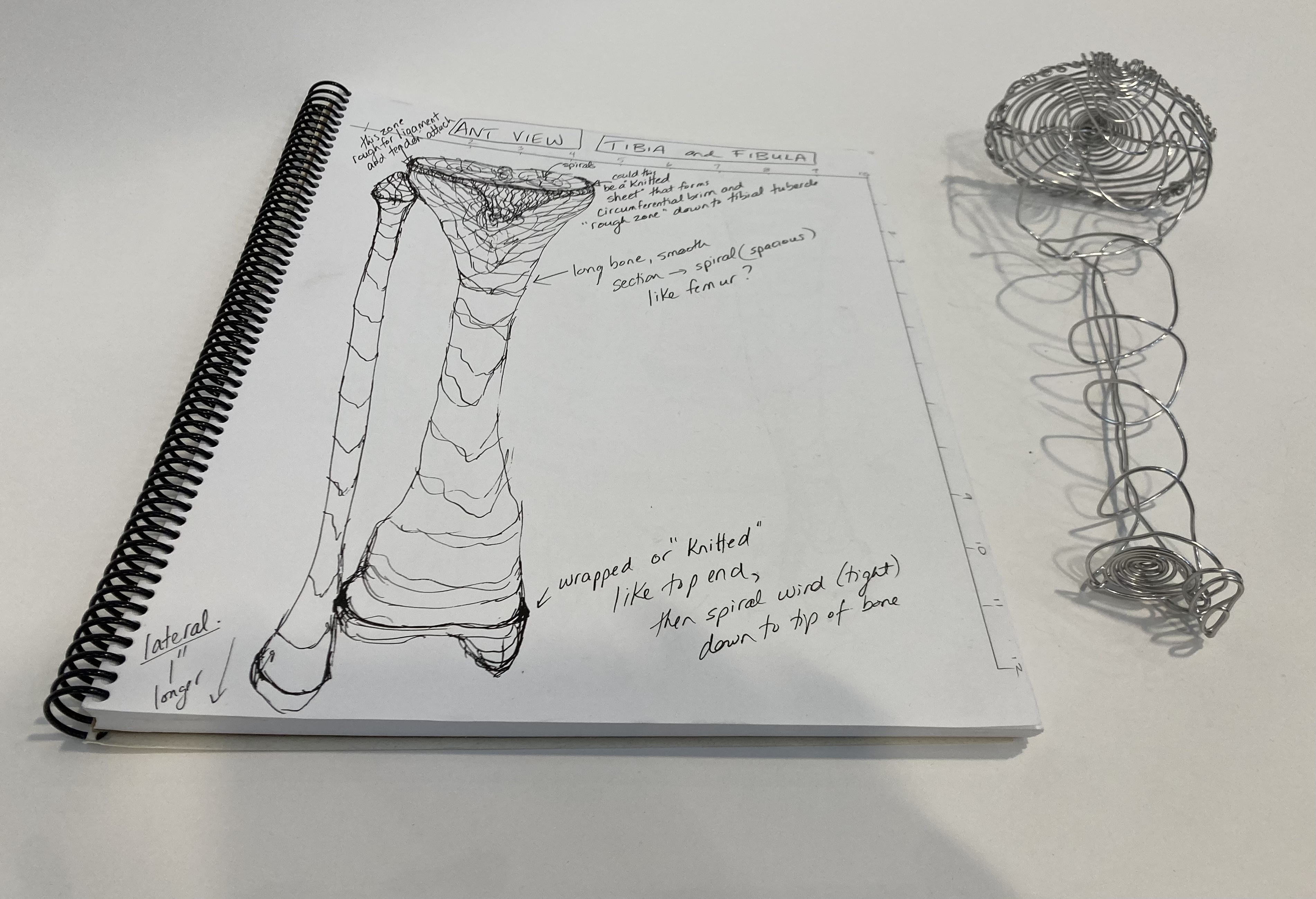
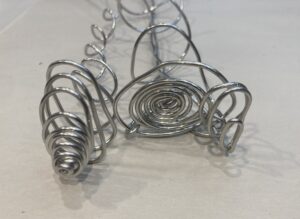
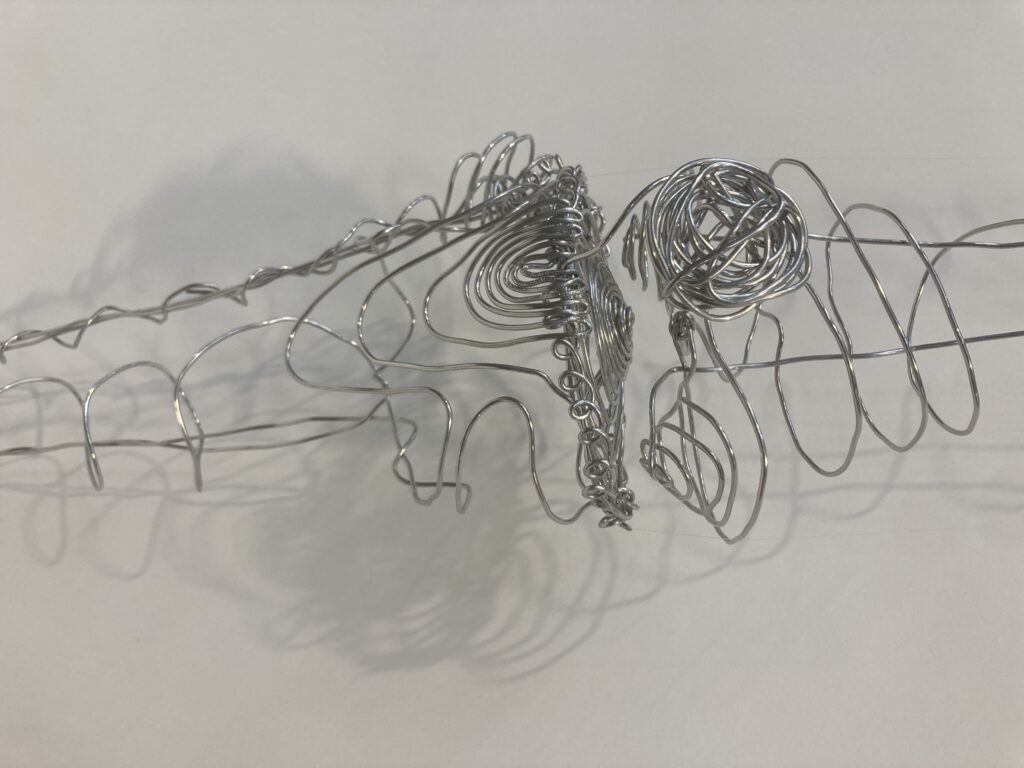
I spent some time with the initial versions of the bone sculptures — I liked how solid the ends of the bones seemed (where they met other bones at the joint lines) and I liked how the long shafts of the bones were by contrast more open — the lines implied the edges rather than tightly defining them. And I really liked the shadows cast by these open lines.
However, the shafts also felt fragile and vulnerable. So I added some more wire to create “beefier” bones. The photos below show first and final versions in contrast with each other, with some varying light angles and backgrounds.
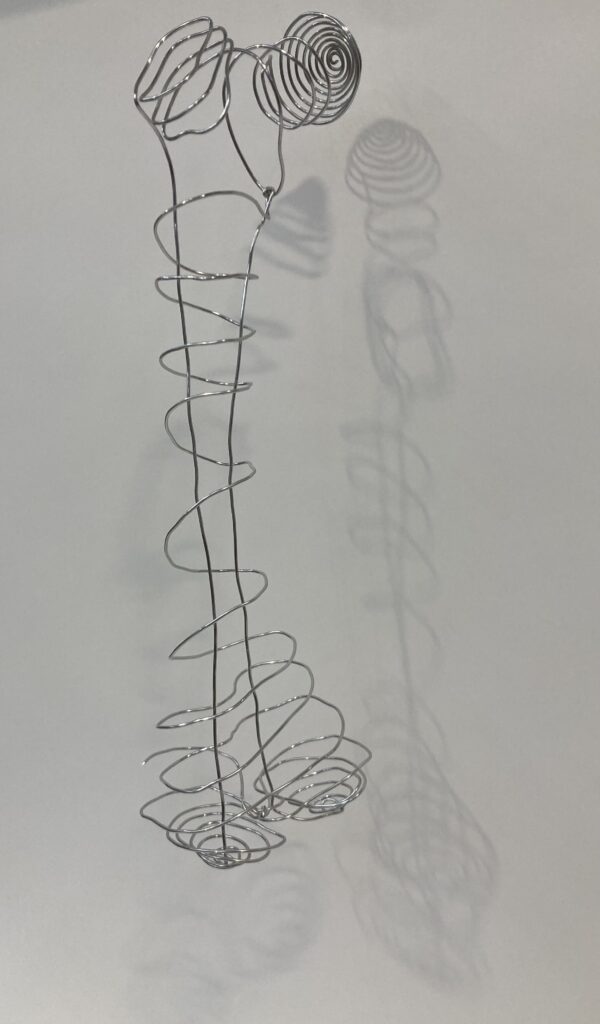
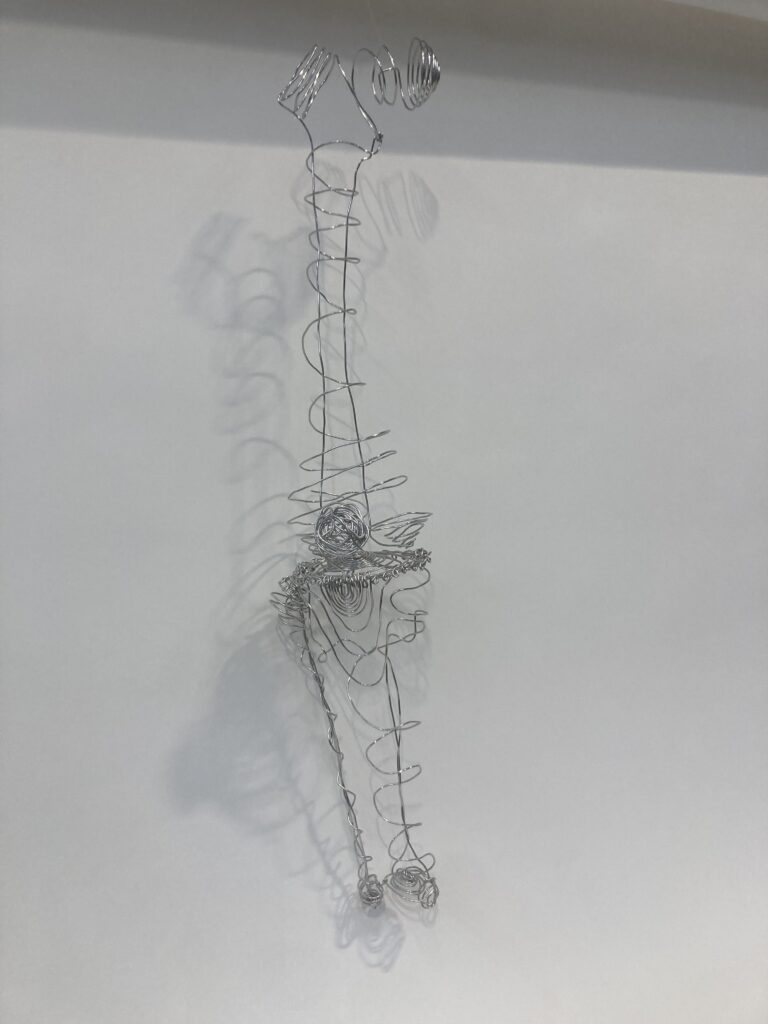
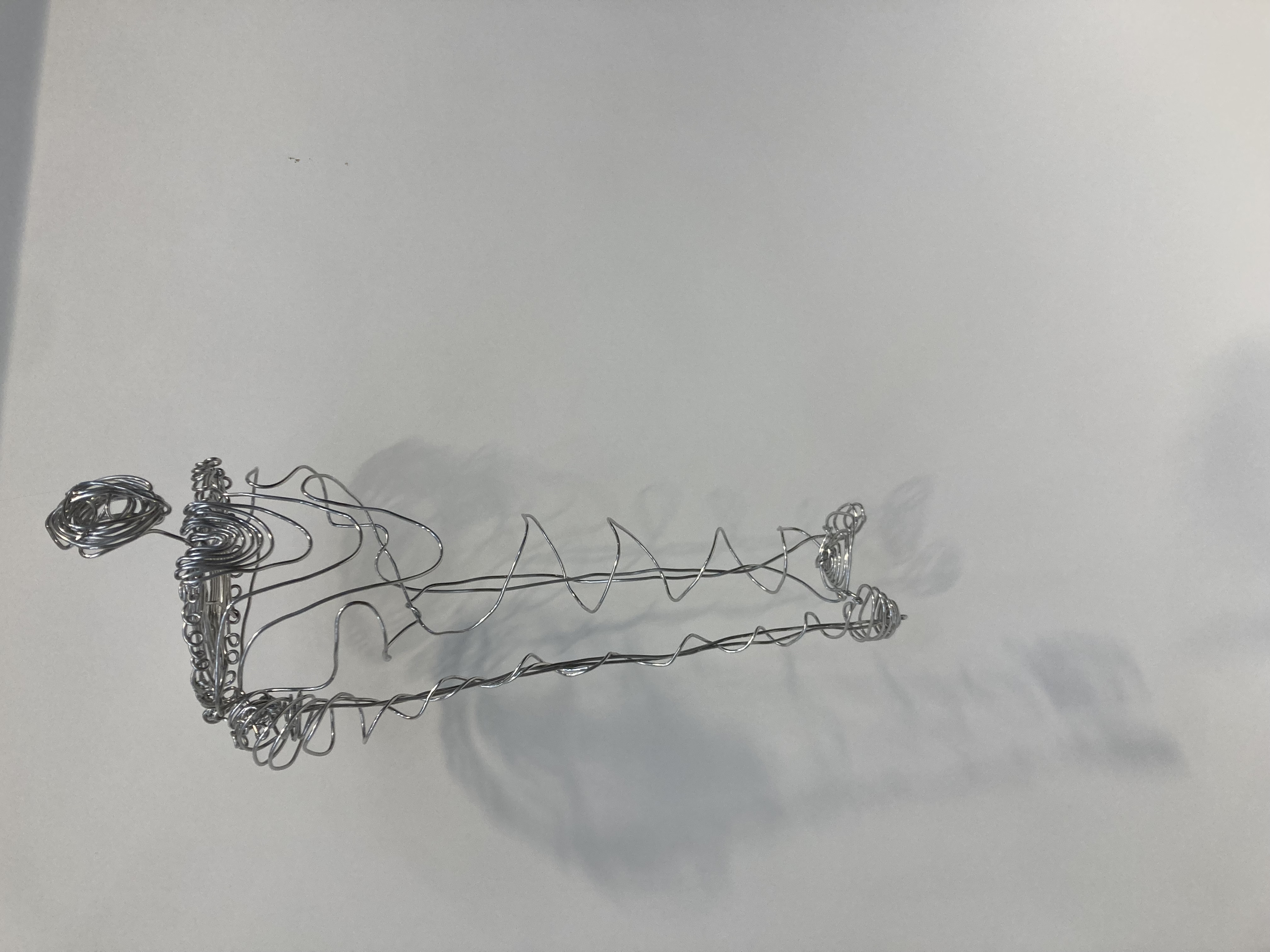
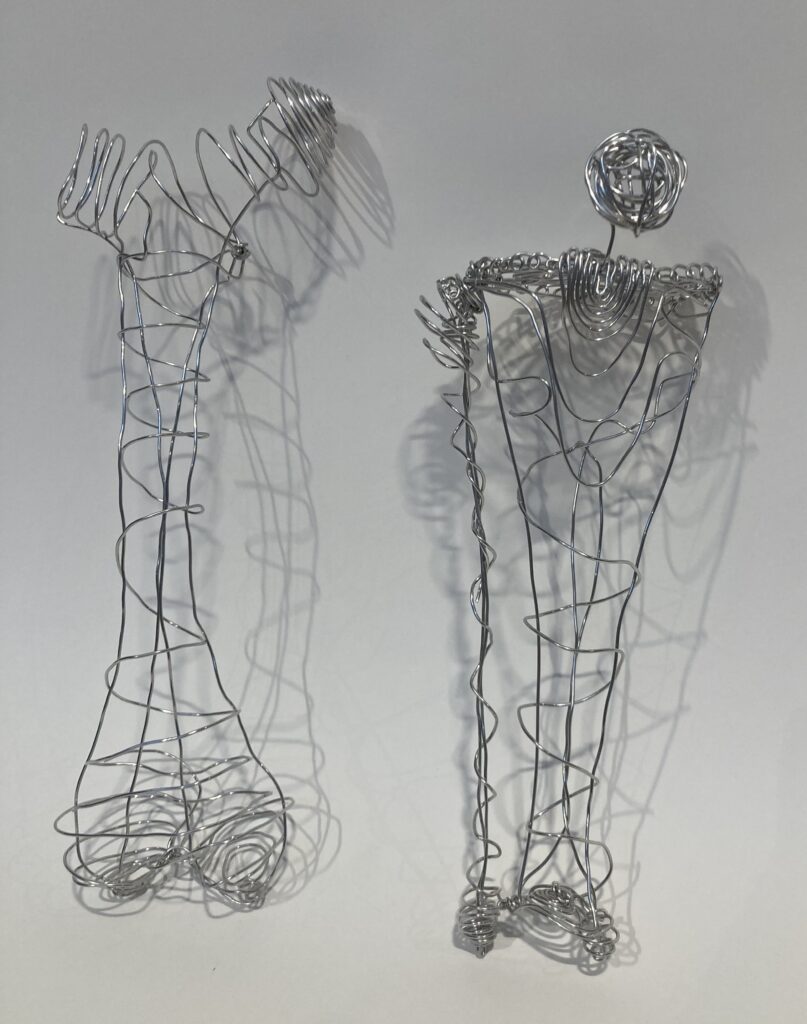
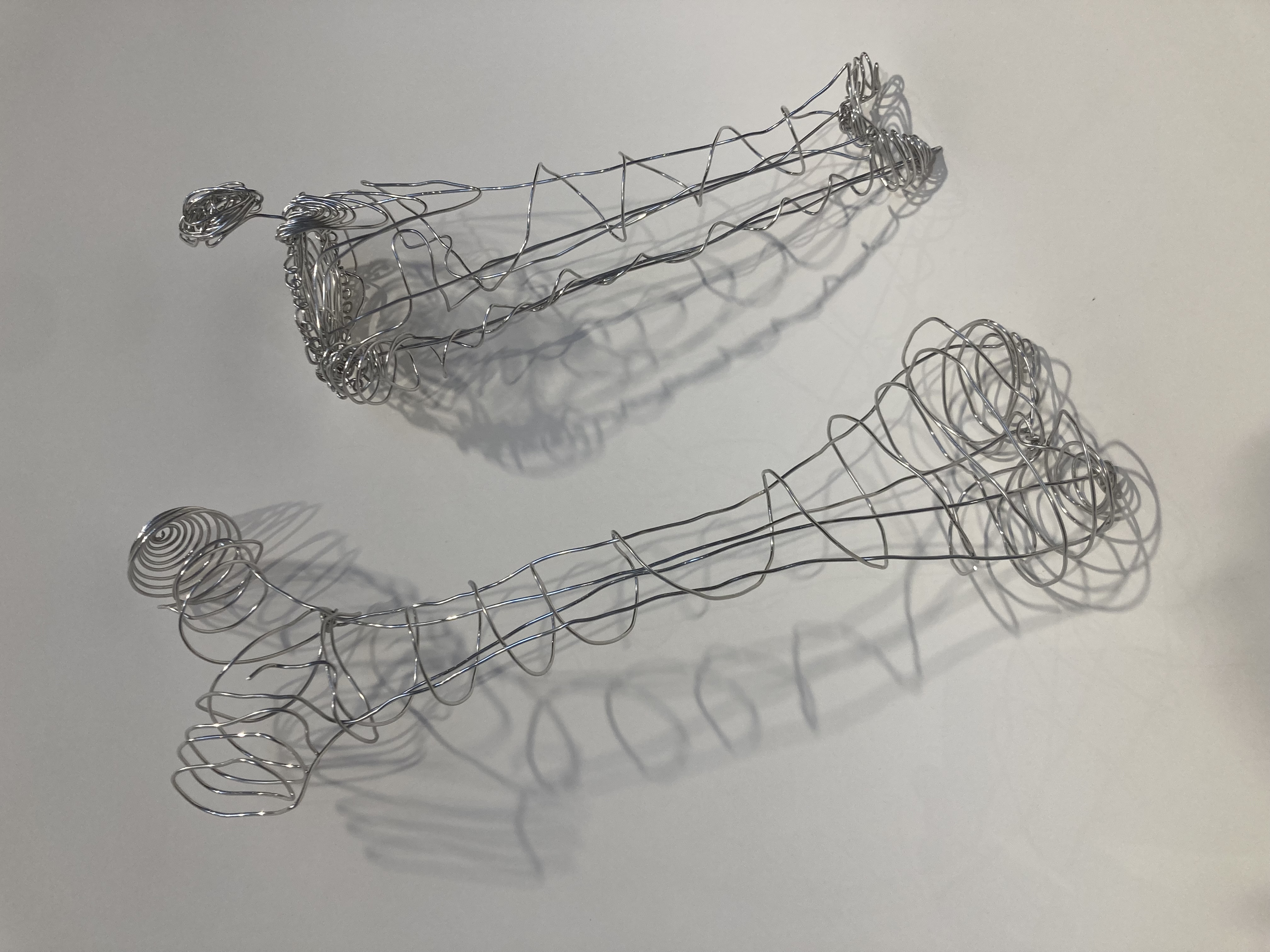
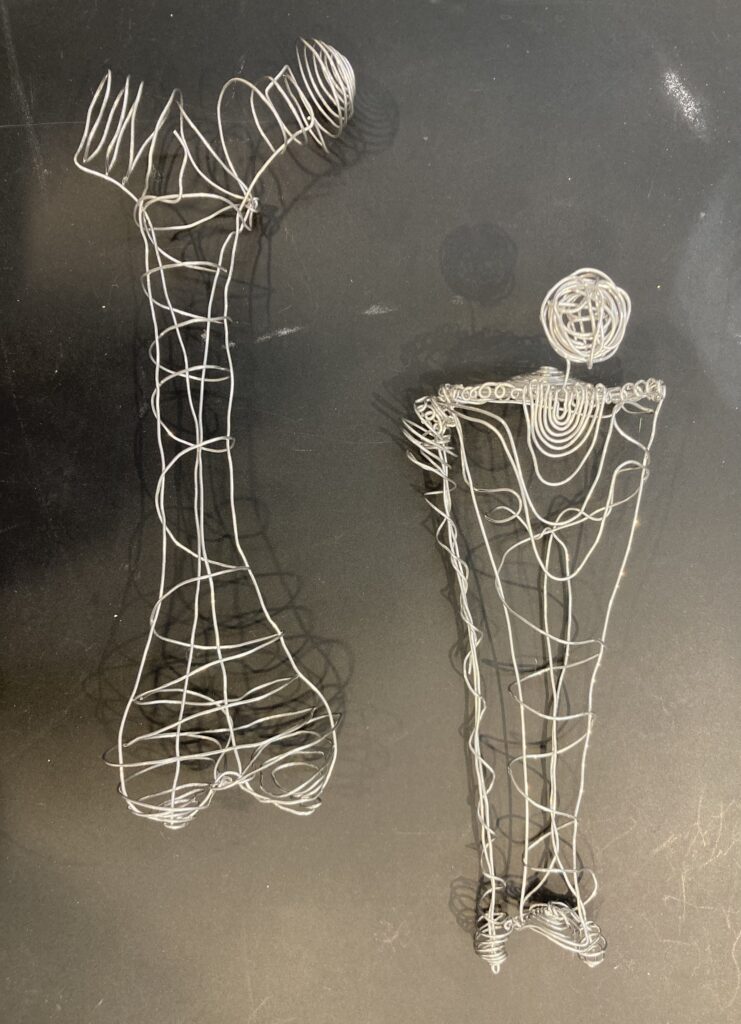

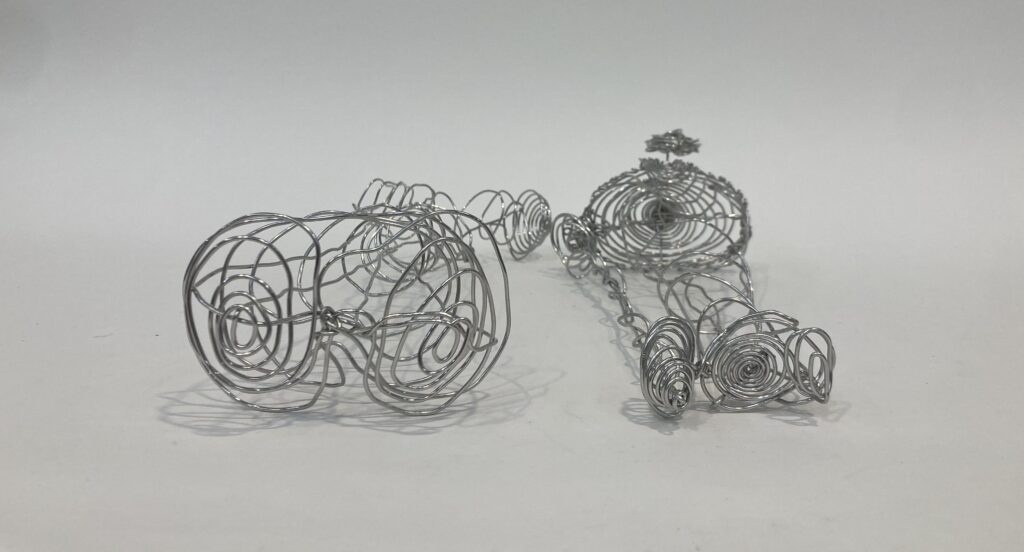

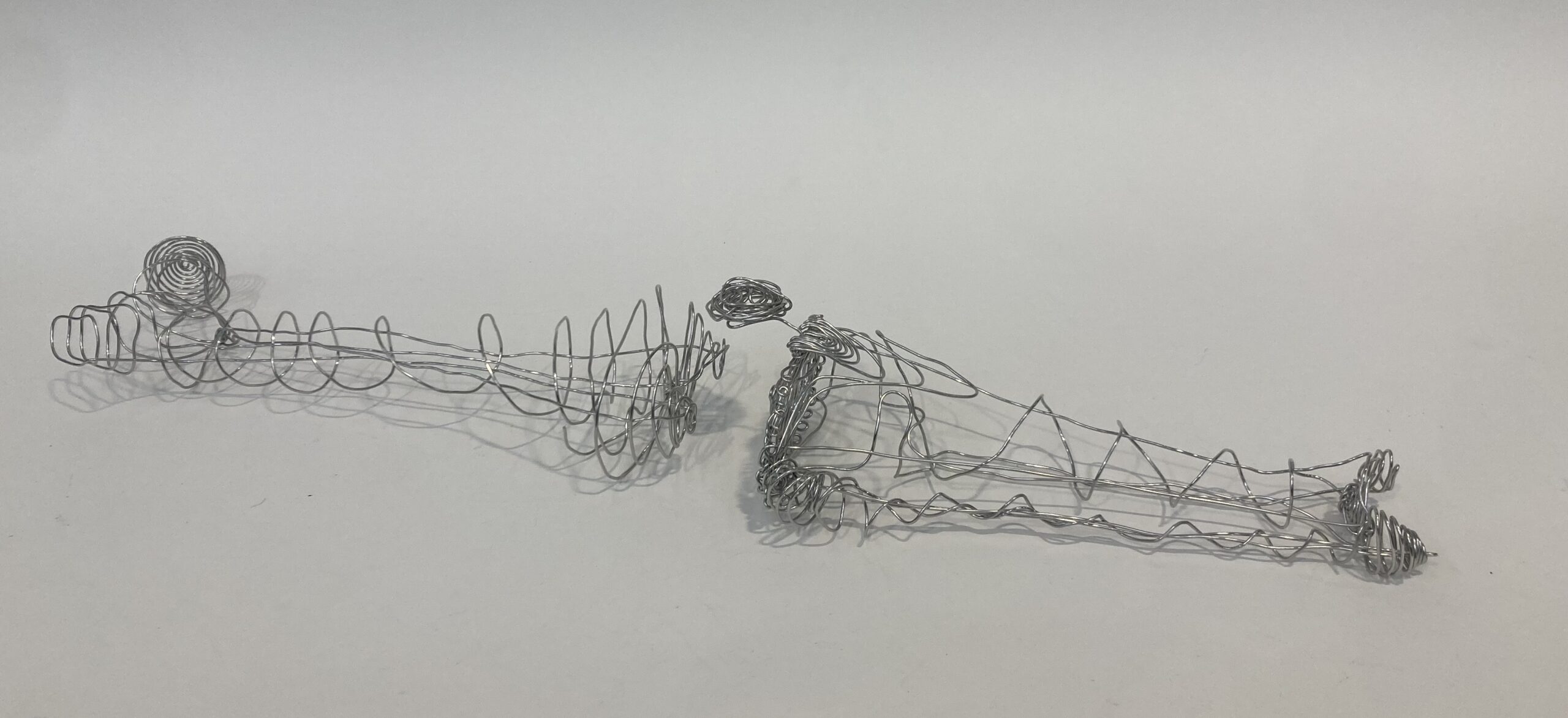
Final Reflections Unit One:
The silver armature wire feels more pleasing to my hands than the stiffer, slightly greasy black wire. I could manually spiral the wire for the shafts of the long bones, or squeeze a wire gently to get it into the spacing I wanted it to have with its neighbours. It felt more naturally expressive than the use of pliers. (Although, making spirals with the pliers holding the centre spot was also a pleasing kind of movement. ) Here’s a photo Angela took of my hands at work around the top of the tibia… wouldn’t have worked the same with the black…
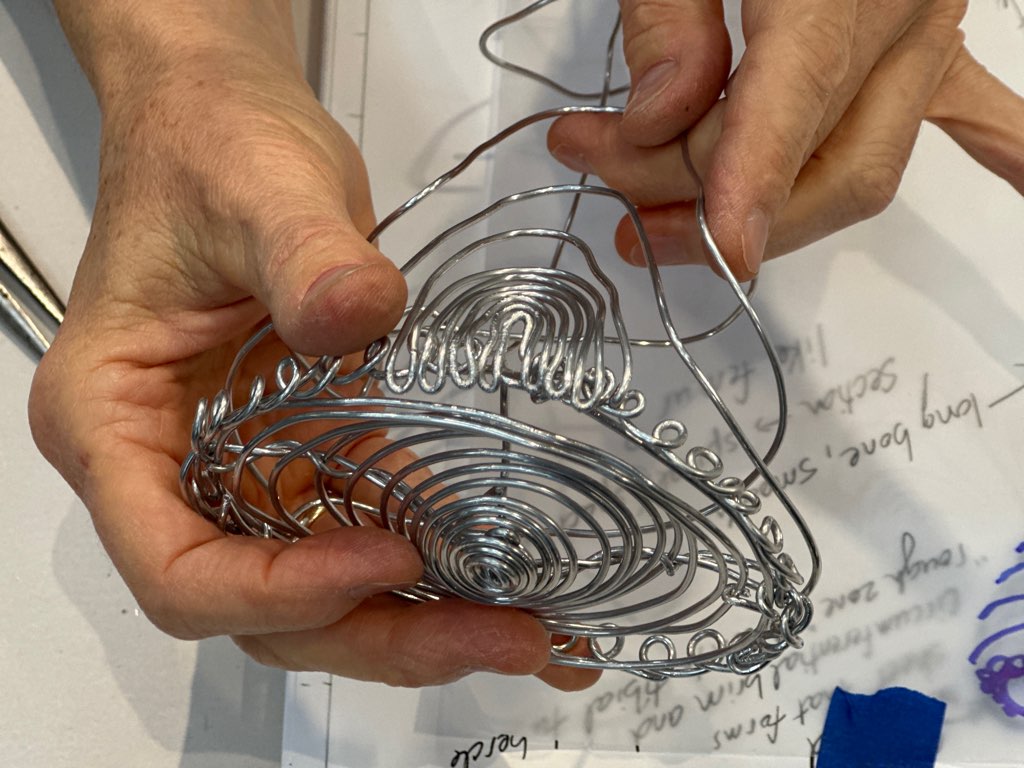
I engaged differently with the two exercises. I began and finished Ex 1 quite technically. Ex 2 felt much more gestural, I was interested in implying the bony shapes rather than fully delimiting them. In the end I added more lines to “stiffen” the bones because they felt too vulnerable to damage, and that they might not function adequately when articulating with someone else’s foot or pelvis piece. However I found the original, lighter version more visually appealing.
Ex 2 was really rich for me because of my background of 40 years as a physiotherapist. I’ve handled more leg bones than I can count, using them as teaching tools, understanding the anatomy and function, where muscles attach, what surfaces are rough due to ligaments attaching, which ones are covered in smooth cartilage for the moving parts in a joint, what has to take the weight of the person. But I’ve never made a bone, in all those years. So interesting to translate that functional knowledge and experience into form.
Final thought about gesture on paper versus gesture in space — I like that a curved wire will stand on its on, but it will also bob and weave and move in response to touch, or a breeze. A line on the page can be animated by the context I give it, but that doesn’t reach the inherent animation of that curved wire. That curved wire in space is also richer by casting shadows that change with the light source and direction. Less control perhaps, but more possibility!
Group Critique: in-class Sept 26: assembling the skeleton
